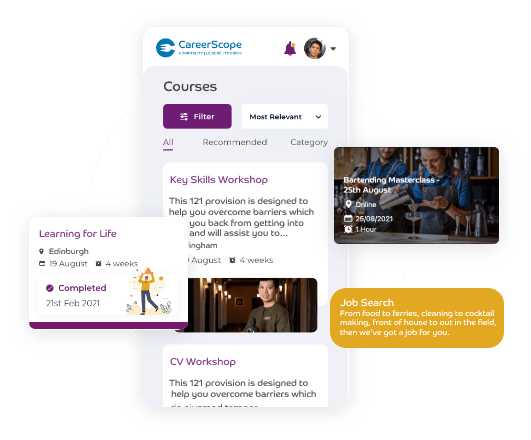Now that you’re aware of the opportunities available to you, it’s time to learn how to make an impression.
From your initial CV and covering letter, to your first day in your new job, we’re here to help! We have a range of useful tools which you can use to ensure you stand the best chance of getting into your dream job.
Putting together a CV that will stand out from the crowd can be really difficult, a hospitality industry focussed CV perhaps even more so. This is why we’re giving you some top tips and some templates so that you can create something that really shows off your personality, skills and experience in the best way.
Cover Letters expand on your CV and provide an opportunity for you to showcase your suitability, skills and enthusiasm for a job that you are applying to.
Create a profile on CareerScope
If you are interested in any of our courses, then CareerScope encompasses the advice, resources and support of dozens of organisations who have partnered with The Springboard Charity to help you right now. Create a profile and apply for your place on the course.
